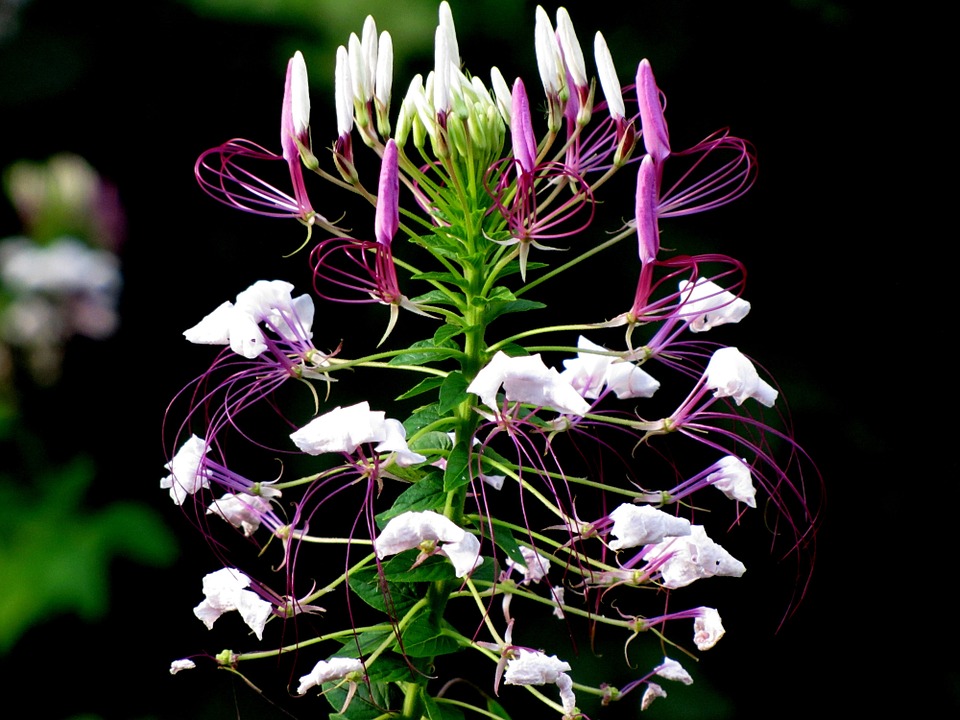This article will delve into the safety of spider plants for feline companions, exploring the potential risks and benefits of these popular houseplants. We will examine the evidence surrounding their toxicity to cats, investigate the symptoms of poisoning, and provide practical advice on how to keep your cat safe while enjoying the beauty of spider plants. We will also address common questions regarding spider plants and cats, such as their potential allergenicity, whether they can cause gastrointestinal issues, and the best course of action if your cat ingests a spider plant.
Part 1: Understanding Spider Plants

1.1. Botanical Background and Origin
Spider plants, scientifically known as Chlorophytum comosum, belong to the Asparagaceae family and are native to southern and tropical Africa. They are highly adaptable plants, thriving in a wide range of environments, including grasslands and forests.
1.2. Distinguishing Features
Spider plants are easily recognizable by their long, narrow, arching leaves, often described as resembling blades of grass. These leaves are typically a bright green colour, but some varieties exhibit variegation with stripes of white, yellow, or cream. A unique characteristic of spider plants is the development of small plantlets, known as "spiderettes," on the ends of their stems. These plantlets are essentially miniature versions of the parent plant and can be easily propagated to create new spider plants.
1.3. Popularity and Uses
Spider plants have achieved widespread popularity as houseplants due to their ease of care and striking appearance. They are often favoured for their air-purifying properties, as studies have shown their ability to remove harmful toxins such as formaldehyde and carbon monoxide from the air.
1.4. Cultural Significance
In some cultures, spider plants are associated with good luck and prosperity. Their ability to thrive in a variety of conditions and produce new plantlets easily has made them symbolic of resilience and growth.
Part 2: Spider Plants and Feline Toxicity

2.1. The Debate: Toxic or Non-Toxic?
While spider plants are often listed as non-toxic to cats by various sources, including the ASPCA and the Humane Society, there is a growing body of anecdotal evidence suggesting that they can cause mild digestive upset in some felines. This discrepancy has led to ongoing discussions and research regarding the actual toxicity of spider plants to cats.
2.2. The Role of Saponins
Spider plants contain saponins, a class of naturally occurring compounds found in various plants. These compounds are known for their ability to create a soapy, foamy texture when mixed with water. While saponins are generally considered non-toxic to humans, they can cause irritation to the gastrointestinal tract in some animals, including cats.
2.3. Potential Symptoms of Ingestion
While spider plants are not considered highly toxic, ingesting significant amounts can potentially lead to mild symptoms in cats. These symptoms may include:
- Vomiting
- Diarrhoea
- Increased salivation (drooling)
- Loss of appetite
- Lethargy
2.4. Factors Influencing Severity
The severity of symptoms often depends on various factors, including:
- Amount consumed: Larger quantities of ingested plant material are more likely to cause noticeable symptoms.
- Cat's size and age: Smaller cats and kittens may be more susceptible to the effects of plant ingestion than larger, older cats.
- Overall health: Cats with pre-existing health conditions may be more prone to experiencing adverse reactions.
Part 3: Keeping Your Cat Safe

3.1. Prevention: The Best Approach
The most effective way to ensure your cat's safety is to prevent them from ingesting spider plants in the first place. Here are some proactive measures you can take:
- Placement: Place spider plants in locations that are inaccessible to your cat, such as high shelves, hanging baskets, or areas that are off-limits to your feline friend.
- Alternative Plants: Provide your cat with safe and engaging alternatives, such as catnip, cat grass, or pet-safe herbs. These can satisfy your cat's natural chewing instincts while eliminating the risk of accidental ingestion.
- Supervision: Closely supervise your cat's interactions with plants, especially during playtime. This helps you identify any potential risks and intervene before any ingestion occurs.
3.2. Acting Quickly: What to Do if Ingestion Occurs
If you suspect your cat has eaten a spider plant, prompt action is essential:
- Remove Plant Material: Carefully remove any remaining plant material from your cat's mouth and surrounding area.
- Observe: Watch your cat closely for any signs of distress or the symptoms mentioned above.
- Contact Your Veterinarian: Immediately contact your veterinarian for advice and guidance. They can assess the situation and advise on the best course of action.
Part 4: Addressing Common Concerns
4.1. Allergic Reactions
Spider plants are not typically known to be common allergens for cats. However, individual sensitivities can vary, and some cats may experience allergic reactions to certain plants, including spider plants.
4.2. Gastrointestinal Issues
While spider plants are generally not considered highly toxic, their ingestion can potentially cause mild gastrointestinal upset, leading to vomiting, diarrhoea, and increased salivation. However, these symptoms are usually temporary and resolve on their own.
4.3. Long-Term Effects
There is no evidence to suggest that spider plants cause long-term health issues in cats. However, repeated ingestion or ingestion of large quantities may lead to more severe or persistent symptoms.
Part 5: Alternatives to Spider Plants
5.1. Pet-Safe Plants
For cat owners seeking safe and visually appealing alternatives to spider plants, numerous options exist:
- Catnip: A popular favourite among felines, catnip is known for its stimulating effects and can provide a safe and enjoyable experience for your cat.
- Cat Grass: Cat grass, a type of cereal grass, is a good alternative as it provides fibre and is safe for cats to ingest.
- Petunias: These colorful, flowering plants are not toxic to cats and add a splash of colour to your home.
- African Violets: These delicate plants are a safe choice for homes with cats, offering a variety of colours and textures.
- Orchids: These elegant plants are non-toxic to cats and can add a touch of sophistication to your home.
5.2. Other Considerations
When selecting plants for your home, consider the following factors:
- Toxicity Level: Always research the toxicity level of any plant before introducing it to your home, especially if you have pets.
- Care Requirements: Choose plants that are easy to care for and match your lifestyle and available resources.
- Cat's Personality: Consider your cat's personality and behaviour when deciding where to place plants. Some cats are more curious and playful than others and may require more careful supervision.
Part 6: FAQs
6.1. Are spider plants poisonous to all cats?
While spider plants are generally considered non-toxic, individual cats may react differently. Some cats may experience mild digestive upset, while others may remain unaffected. It's important to be aware of your cat's individual sensitivities and monitor them closely for any signs of adverse reactions.
6.2. What are the most common symptoms of spider plant poisoning in cats?
Common symptoms include vomiting, diarrhoea, drooling, loss of appetite, and lethargy. If you observe any of these signs after your cat has been around a spider plant, it's essential to seek veterinary advice.
6.3. Should I induce vomiting if my cat eats a spider plant?
It is not recommended to induce vomiting unless advised by your veterinarian. Vomiting can be dangerous for cats, especially if they have ingested a large amount of plant material. It's best to consult your veterinarian for guidance on the appropriate course of action.
6.4. Are spider plants harmful to kittens?
Kittens are particularly vulnerable to the potential risks of plant ingestion due to their smaller size and greater curiosity. It is essential to take extra precautions to keep spider plants out of their reach.
6.5. Is it safe to have a spider plant in my home if I have a cat?
It is possible to enjoy spider plants in your home with a cat, but it requires careful placement and supervision. Choose a location that is out of reach of your cat, such as high shelves or hanging baskets.
6.6. What should I do if my cat displays signs of poisoning?
If you suspect your cat has ingested a spider plant and is showing signs of distress, seek immediate veterinary attention.
6.7. What is the best way to prevent my cat from ingesting spider plants?
The best approach is prevention. Place spider plants in areas inaccessible to your cat, provide alternative, cat-friendly plants, and supervise their interactions with all plants.
6.8. Are there any specific spider plant varieties that are more toxic to cats?
While spider plants are generally considered non-toxic, some varieties, such as the variegated spider plant (Chlorophytum comosum 'Variegatum') may contain higher levels of saponins. However, the differences in toxicity levels between varieties are not well-established.
6.9. Can spider plants cause skin irritation in cats?
Some cats may experience mild skin irritation if they come into contact with the sap of spider plants. This is more likely to occur with variegated varieties due to their higher sap content. If your cat exhibits signs of skin irritation, such as redness, itching, or swelling, wash the affected area with cool water and consult your veterinarian if necessary.
Everyone is watching
-

Are Cat Ribs Flexible? Understanding Their Anatomy
CATS & KITTENSThis article delves into the fascinating world of feline anatomy, exploring the flexibility of cat ribs and ho...
-

Can Cats Eat Bananas? (Everything You Need to Know)
CATS & KITTENSThis article dives into the intriguing question of whether cats can safely enjoy the sweet, yellow fruit, bana...
-

Cat Lifespan: How Long Do Cats Live?
CATS & KITTENSThis comprehensive guide explores the factors influencing the lifespan of our feline companions, providing ins...
-

Can Cats Get COVID-19? What You Need to Know
CATS & KITTENSThis article will delve into the fascinating world of feline COVID-19 susceptibility. We'll explore whether ca...
-

Can Cats Eat Eggs? A Complete Guide to Egg Safety for Your Feline Friend
CATS & KITTENSWhen it comes to treating our furry companions, we all want to ensure we're doing what's best for them. Eggs...
